What Is RealAccount Mac Virus?


This RealAccount is an adware and browser hajacker for mac that is being distributed through various websites, including installation bundlers and infected ads. Once your device is infected by this virus, the browser may change its settings to open malicious websites automatically or start downloading potentially unwanted programs (PUPs). This threat can be even more dangerous as it has been developed specifically to cause problems in Apple systems. It can also increase the risk of data theft or data manipulation.
How Is RealAccount Mac Virus Distributed?
This threat may be distributed through several methods. Spam email campaigns and malicious advertisements are the main sources of distribution. Alternatively, this adware can be installed by you when you try to download another application from the Internet. Google Chrome users can also install this adware with the same installer. The most obvious signs of infection are the changed browser settings. The virus can change your default search provider to Yahoo, Ask or AOL. It is also possible for it to change the homepage and new tab URL to a malicious site. Furthermore, this malicious app can modify Chrome settings, adding your IP address to an online ad-hoc and sharing it with third parties without your permission.
How harmful is RealAccount hijacker?
RealAccount infection is dangerous because it may be able to collect your personal data, including usernames, passwords and credit card details. In addition to that, it may also download malicious files onto your Mac that can be used to gain access to your computer. Further still, RealAccount can compromise your online activities and cause you to visit phishing websites or infected domains. The adware/browser hijacker spreads through third-party bookmarking services and links in spam email messages. It can also be installed as an extension or an add-on in order to gain access to various online apps.
How did I get infected?
In most cases, the adware/malware infected your Mac through a software bundle or an installer on a third-party website. If you have recently downloaded any freeware from the Internet, it might be that this threat has been silently bundled with it. You should not download unknown options such as software updates and other files from third-party software distribution websites. Your computer may be infected by RealAccount if you have downloaded one of those add-ons or extensions that are provided by malicious developers. If you have just upgraded your Mac and clicked on an update option that was offered to you, this adware can also be responsible for the infection. Typically, installation bundles do not contain malicious content until they are uninstalled from your system afterwards. However, it is also possible that you were tricked into installing unauthorized software. This will lead to the removal of your computer’s legitimate programs and will make the file responsible for this infection become more visible.
How can I Remove RealAccount virus ?
Step 1: Uninstall RealAccount and remove related files and objects
- Open your Finder –> Click on GO –>Click on Utilities
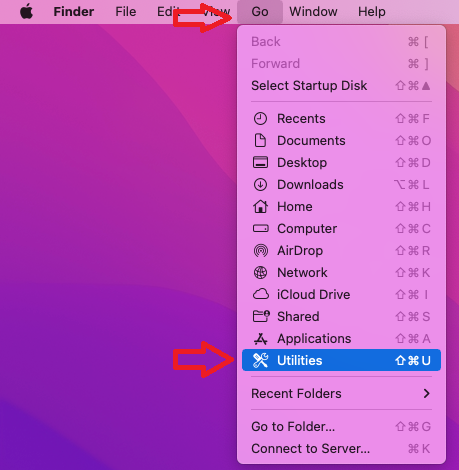

- Find Activity Monitor and open it


- Review all the processes in Activity Monitor and write down the ones related to RealAccount virus
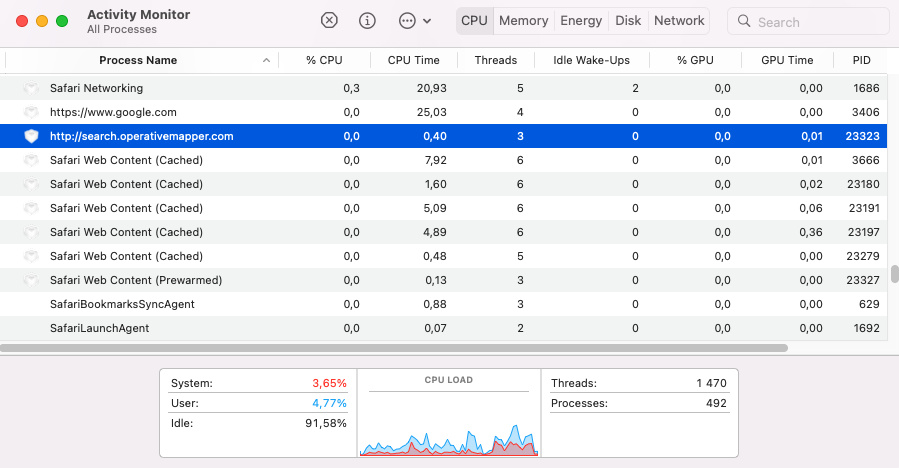

- Select Quit
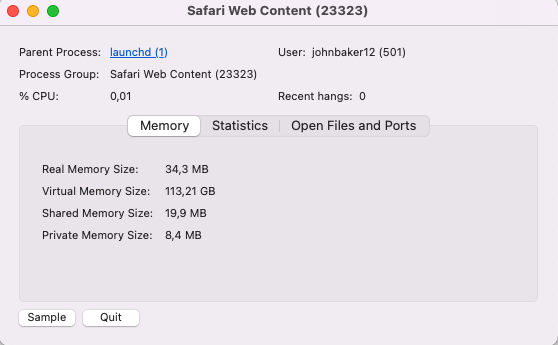

- To kill the malicious process, choose the Force Quit option.


Step 2: Remove RealAccount – related extensions from Safari / Chrome / Firefox
The first thing you need to do is to make sure Safari is not running. If you have troubles closing it, you may need to Force Quit Safari - (Start Activity Monitor by opening up Finder, then proceed to Application --> Utilities --> Activity monitor. Locate the Safari process and force quit it.
Safely launch Safari again by holding the Shift key and clicking on the Safari application icon - This will prevent Safari’s previously opened malicious web pages.
In case that you still are having trouble with scripts interrupting the closing of unwanted pages, please do the following:
- Force Quit Safari again.
- Disconnect form Internet and try again.
Then Re-Launch Safari but don’t forget to press and hold the Shift button to prevent pop-ups. Then, click on Preferences.


- Carefully take a look at your default home page and change it if the hijacker altered it.
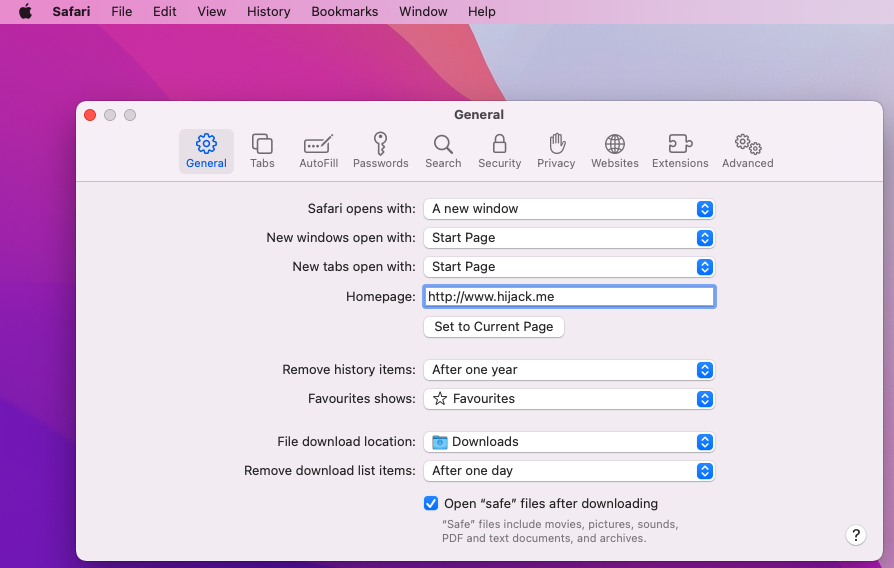

- Then go to the Extensions tab and make sure there are no unknow extensions installed.
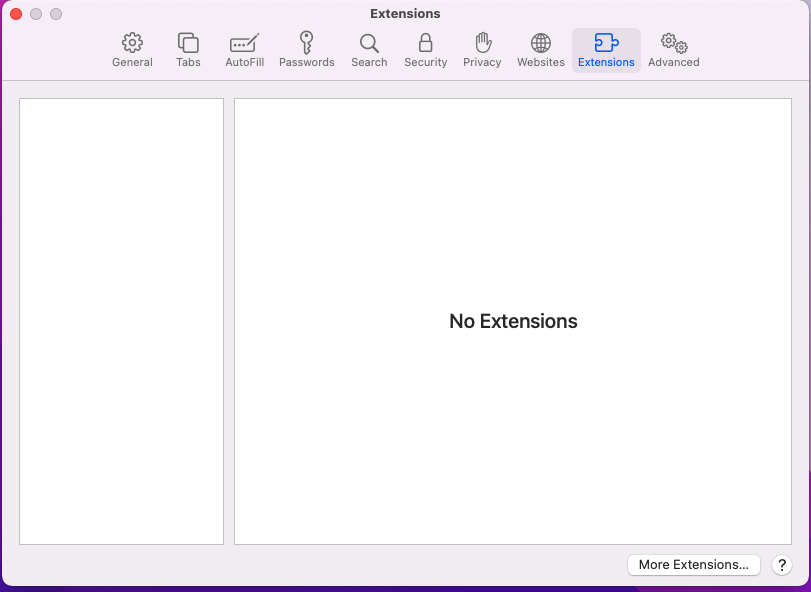

- Next step is to click on Privacy tab
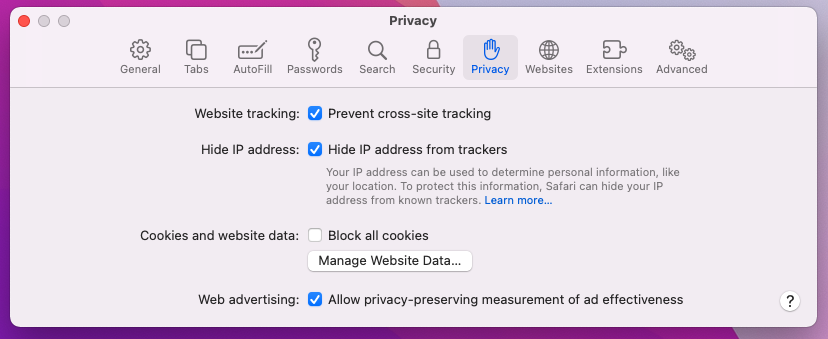

- Manage website data


- Here you can remove any unwanted website data or just remove them all. Please, keep in mind that after you do this all stored website data will be deleted. You will need to sign-in again for all websites that require any form of authentication.
- The next step is to Clear History (if you want), select the tab.


- Click the menu next to clear and choose a time period — if you want to completely reset Safari, choose all history.
- Press Clear History
- To remove from Chrome, open the browser and click the icon with the three dots located in the top-right.
- Select to More Tools --> Extensions and review what Chrome Extensions are present in the browser


- Remove the ones that you do not recognize.
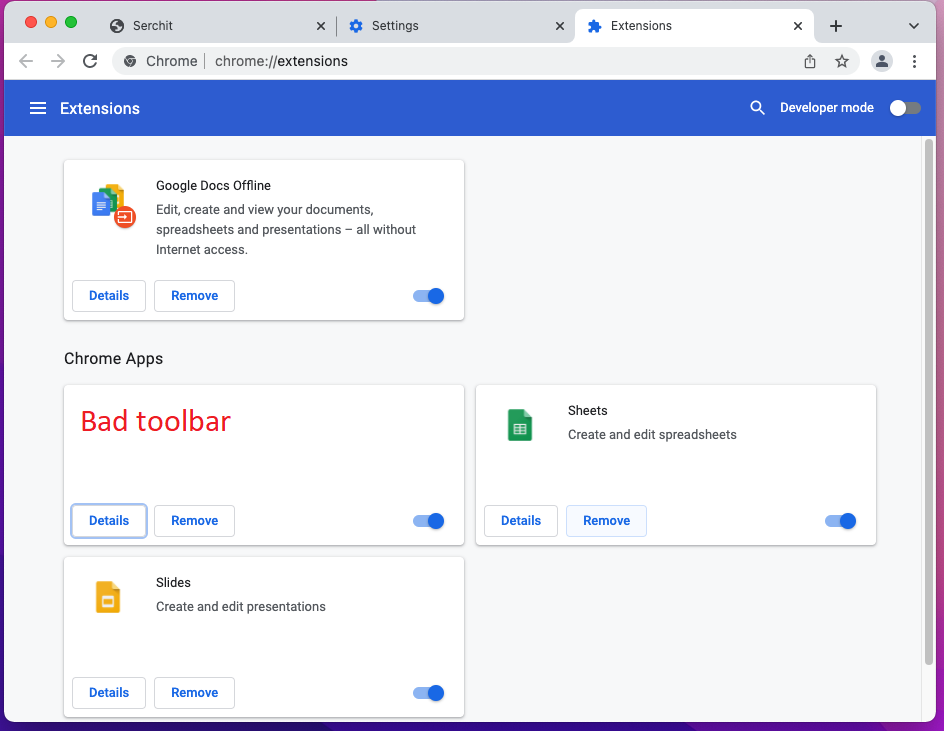

- If the parasite continues to disrupt your browsing with Chrome, this is what else you can do:
- Click again the menu of Google Chrome, and open Settings.
- Select the Search Engine from the left panel, review the available search engines and change the default to your preference.


- Then, click on Manage Search Engines, review the list of search engine availabilities and if any of the listed items looks suspicious, click the three-dots next to them, and delete.


- Click on Privacy and Security in the left panel, select the Clear browsing data option, check every box except the Passwords one, and click Clear Data.


- Next step is to clear Notifications, select the Site settings option in the Privacy and Security section, then locate Notifications.


- Review the listed websites in the Allow to send notifications section and if any of the entries shown there seem dubious or related to the browser hijacker, select the three dots next to the object and click on Remove.
- Start Mozilla Firefox
- On the top right click the three dashes
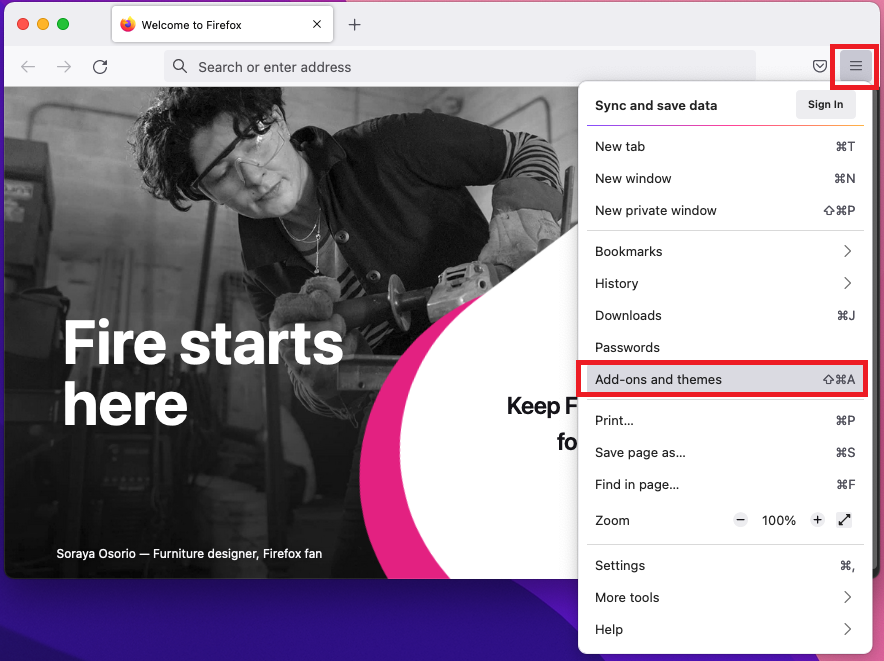

- go to add-ons and themes
- The add-ons manager will open
- Carefully review review four Firefox Extensions
- If any unwanted extension is present, click on the three horizontal dots and then Remove
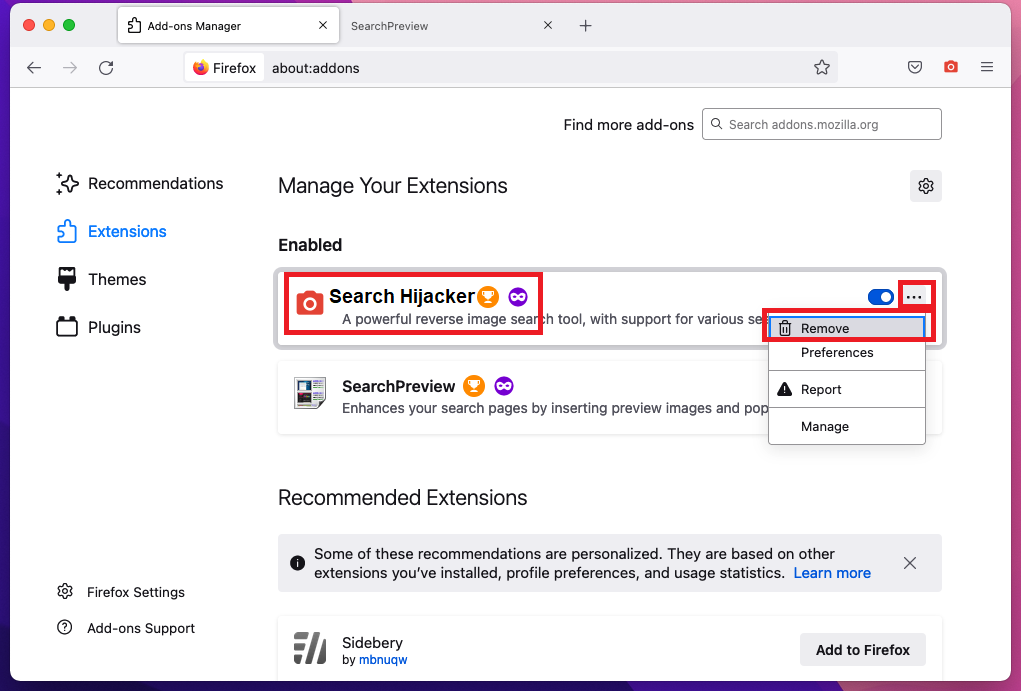

- After the extension is removed, restart Mozilla Firefox by closing it from the red dot in the top left and start it again.
Step 3: Scan for and remove RealAccount files from your Mac
Fix your browser settings with SpyHunter Anti-Malware
Once you download and install SpyHunter for Mac run a scan.
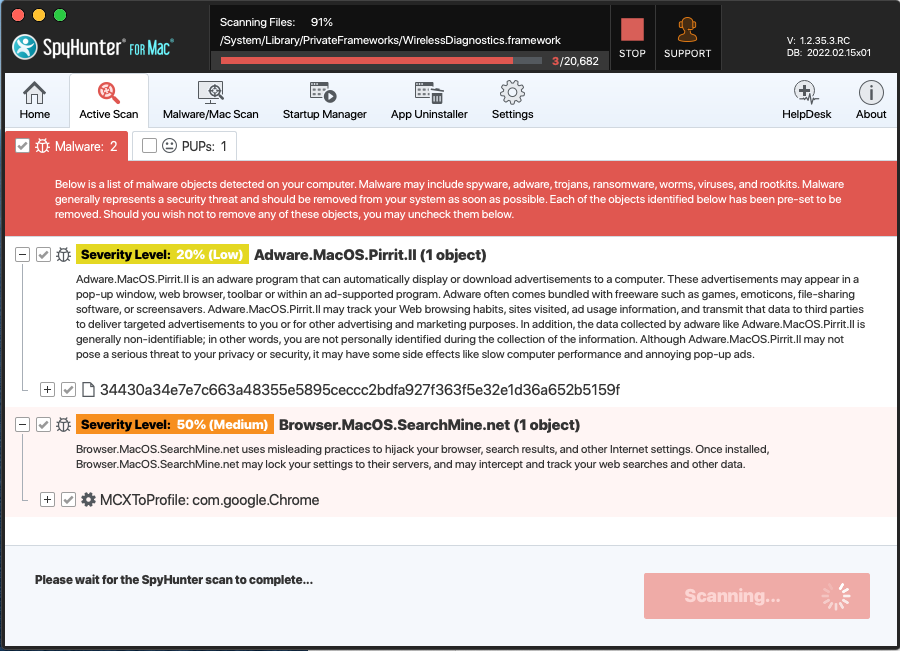

Once the scan is complete, your mac will be virus free.
RealAccount malware Frequently Asked Questions:
- How do I get rid of RealAccount?
RealAccount is a Browser hijacker – malicious software that can be installed by third-party applications or websites. They usually change the settings of web browsers and search engines to display certain ads, pop-ups, banners, etc.
- What are the symptoms of RealAccount infection in your Mac?
RealAccount becomes your web browser’s built-in search engine.
Your browser’ s search queries are redirected through RealAccount.com
The “RealAccount” browser extension or some shady software is installed on your Mac.
- How do I remove RealAccount from my browser?
In Internet Explorer, click the gear icon on the top left and select Manage add-ons. Under Add-on Types, select Search Providers. Select your search engine from the list of providers and click Remove to remove it. In Google Chrome, go to Settings (at the top right) and choose Search in the On Startup drop down menu.
- How do I uninstall RealAccount?
How to Make Your Mac Run Faster?
You might be wondering how to make your Mac run faster? It is a common misconception that the more processing power you have, the faster your computer will run. In reality, it’s actually about what’s going on in your processor and memory. For the average person using a computer for just general applications like word processing and web browsing, you don’t need much in the way of computing power.
– Use an SSD drive instead of a hard disk drive.
– Double your RAM if possible.
– Disable System Integrity Protection (SIP). (Attention! – do this only if you know the consequences.)
References:
- More about pop-up advertisements on Wikipedia.
- MacOS malware
- SpyHunter Anti-Malware overview and also the reasons why we recommend it for malware elimination.
Please, have in mind that SpyHunter offers a free 15-day Trial version with full functionality. Credit card is required, no charge upfront.

